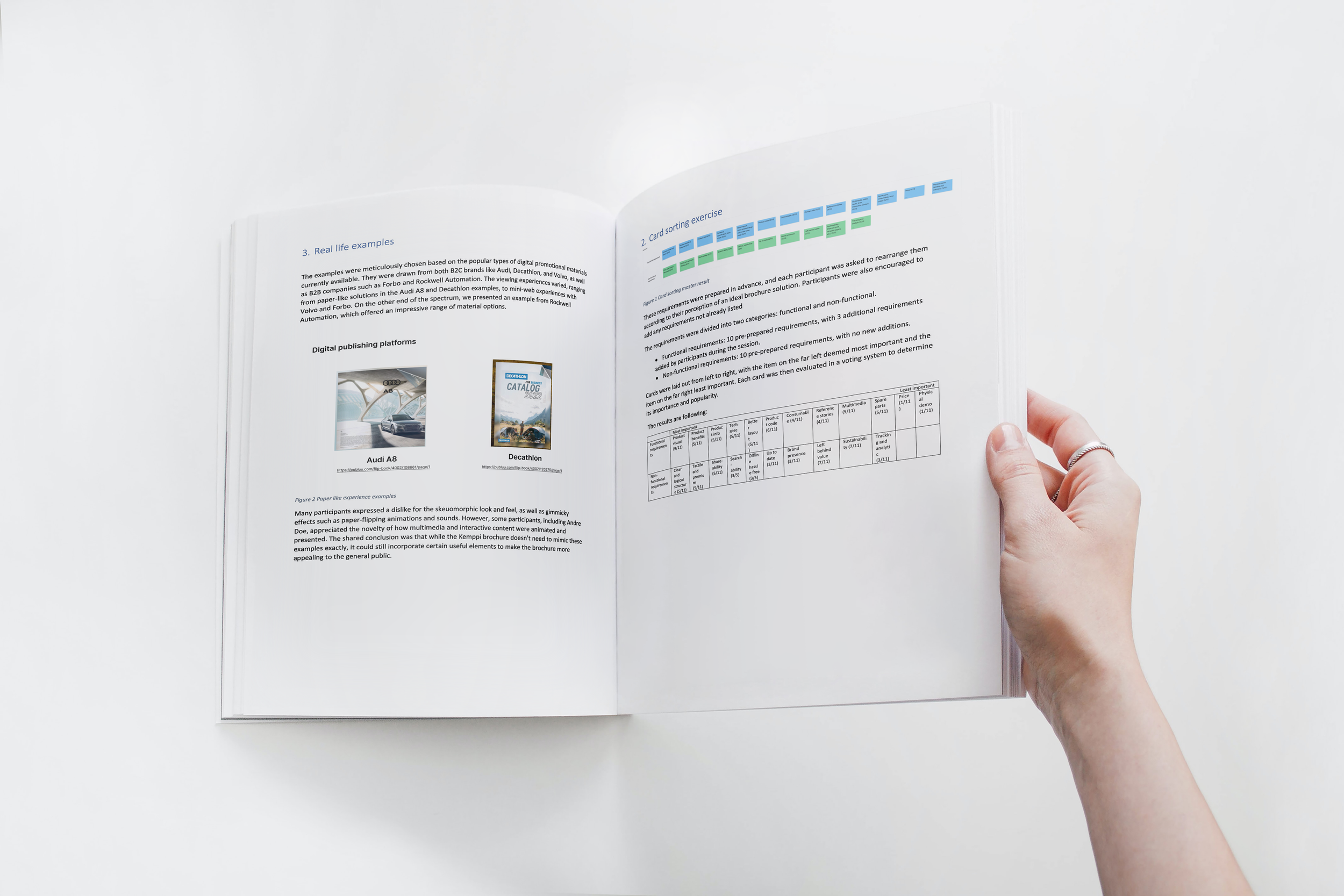Workshops and research streamlined sales tools and reduce 90% printing costs.
Products: Kemppi Product Catalog
Type: B2B, B2C
Role: Service Designer
Duration: 2023 – 2024
Expertises: Product Design, UX Design, Interactive Exhibition, Design Workshop, User Research
Impact: Addressed a legacy pain point affecting 12,000+ annual prints in 8 product categories
The challenge
Kemppi’s central marketing team prints over 12,000 product brochures annually to support global sales. Despite the logistical burden and rising costs, physical materials remained critical — especially for field reps and dealers working with customers on busy factory floors.
Attempts to replace paper with digital alternatives had failed to stick. Off-the-shelf tools lacked the flexibility and familiarity users needed, especially for customizing materials and presenting them in high-stakes sales conversations.
Our goal
To design a custom digital brochure concept that:
Makes it easy to tailor content for different client needs
Preserves the leave-behind value of printed materials
Offers accessibility and usability for both tech-savvy and traditional users
Aligns with Kemppi’s digital strategy while supporting real-world sales workflows
My Role
As the lead designer, I:
Led research and stakeholder interviews across 6 markets
Synthesized needs using card sorting exercises and UX analysis
Designed the brochure configuration concept and viewer
Ensured the solution balanced usability, technical feasibility, and business value




Our Approach
In-Depth Research Across Teams
Interviewed 22 participants from sales, marketing, and dealer networks
Conducted card sorting to surface key content priorities and common pain points
Evaluated existing digital brochure solutions for their pros and cons
Key Insights
Users struggled to customize materials for client-specific needs
Print remained valuable, but bulky catalogs and DIY PDFs were inconvenient
A hybrid solution needed to offer both digital flexibility and tangible impact
Concept: Modular, Personalized Brochures
Interface to configure and personalize product selections from a central catalog library
A high-utility viewer for presenting content and exporting one-pagers or full brochures
QR code feature linking to Kemppi’s webshop for easy printing and ordering
Technical Foundation
Built with React and connected to Kemppi’s PIM system for real-time data
Designed to work seamlessly on tablets for in-field use
Outcome
Concept and research findings were widely praised within the Kemppi network
Recognized for blending user insight, strategic design, and delivery feasibility
Estimated development timeline of just 4–6 weeks, with strong internal support for rollout






